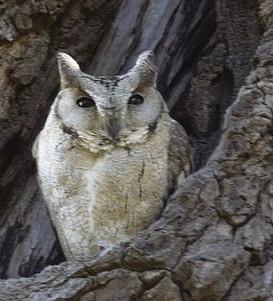Facts About Indian scops owl
The Indian Scops Owl is a fascinating small bird native to South Asia. Previously classified with the Collared Scops Owl, it has since been recognized as a distinct species. Its name, "Indian Scops Owl" derives from the Sinhalese word "bakamuna" which also refers to the white barn owl and the brown fish owl.
Despite its modest size, measuring about 23 to 25 centimeters, the Indian Scops Owl is one of the larger scops owls. It is notable for the tufts on its head and its plumage, with grey or brown feathers above and buff-colored feathers below, streaked with darker lines. Its face is either whitish or buff, and it has striking orange or brown eyes paired with a buff-colored neckband. Its flight is characterized by a distinctive undulating pattern. Though it closely resembles the Collared Scops Owl and the Oriental Scops Owl, it can be distinguished by its call and eye color.
The Indian Scops Owl's range extends from eastern Arabia across the Indian Subcontinent, except in the far northern regions. These nocturnal birds are adept at blending into their environment during the day. They primarily hunt insects and emit a characteristic call, which is a soft, single note.
For nesting, the Indian Scops Owl favors tree cavities and typically lays between 3 to 5 eggs.
The Indian Scops Owl is a remarkable bird with unique traits that enable it to thrive in its South Asian habitat.
